As robotics technology becomes more advanced and more accessible, we’ve seen an increase in robotic companion products come to market, intended to simulate human interaction.
Sphero’s latest product, Ultimate Lightning McQueen, displays the company’s engineering and design mastery of life-like robotics technology. Similar to the BB-8 Droid, this new product in partnership with Pixar is packed with impressive animatronics features that bring the product to life.
And a quick look at Lightning’s life-like movement (automatic as well as activated by touch) beneath his exterior:
For this teardown, we’re going to focus on some of the most important features that deliver this life-like result:
1. Emotive suspension – Lightning’s front wheels can move in 2 axes, mimicking what you see in the Cars movie, giving this toy a life-like quality.
2. Animatronic face – an animatronic mouth piece combined with eyes displayed by a custom LCD give Lightning facial expressions and personality.
3. Capacitive touch sensors – there are five sensors installed on the top enclosure so the product reacts to being touched.
Quick reminder that Fictiv is a manufacturing platform and our expertise is around the mechanical side of hardware development. So for teardowns, we dig into the mechanical systems and leave the electrical analysis to our EE friends.
Let’s dive in!
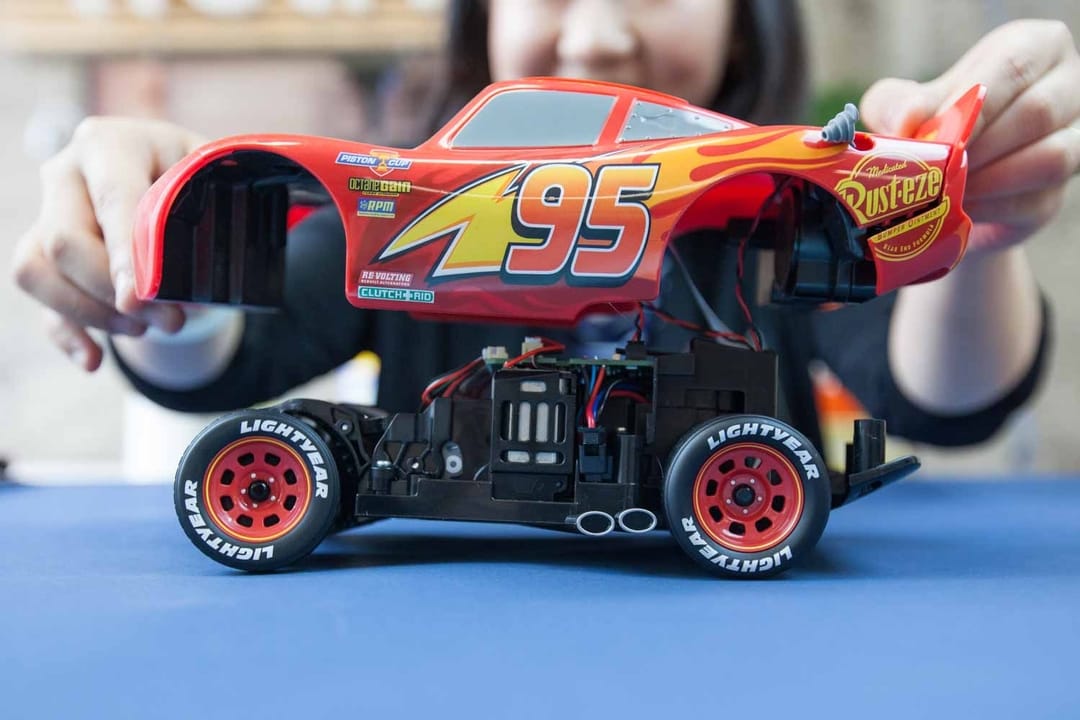
Emotive Suspension
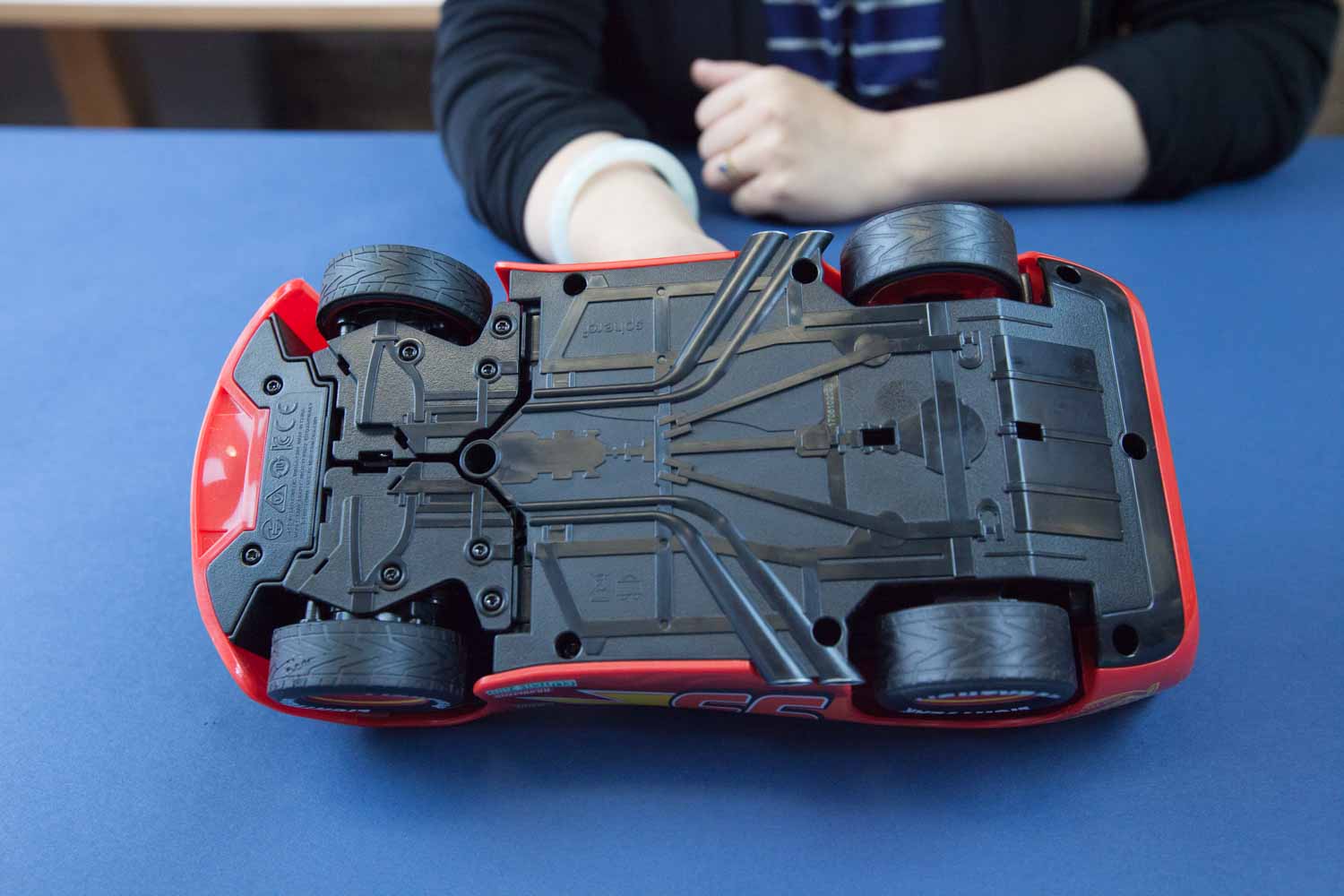
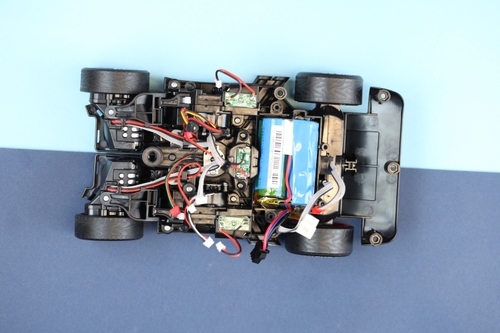
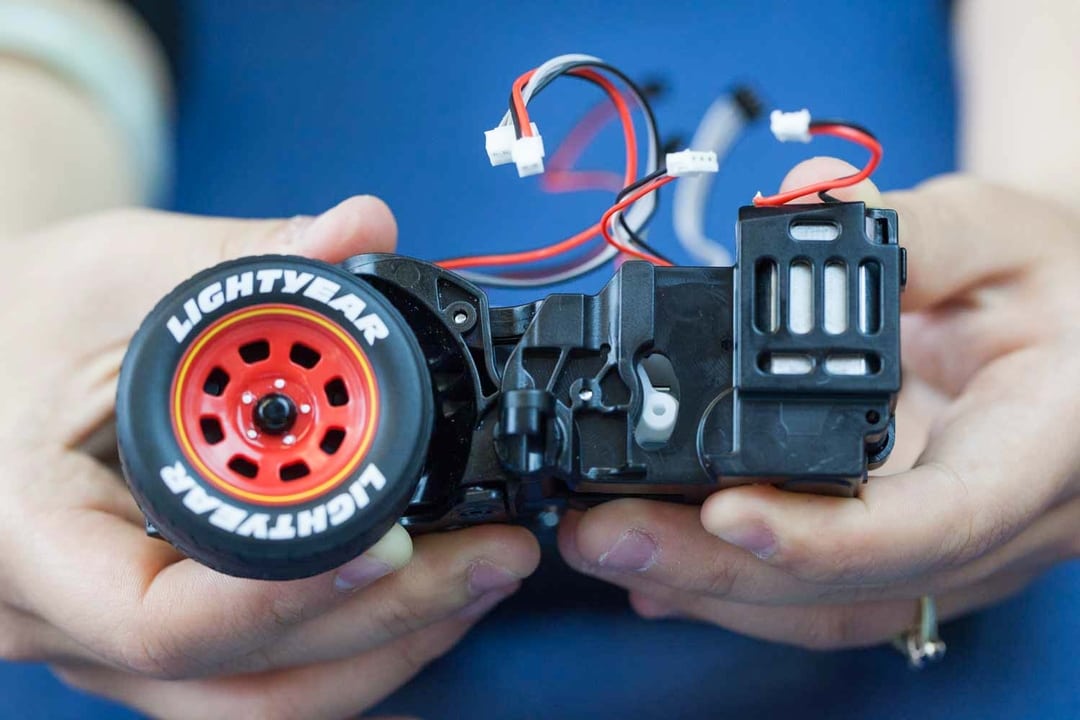
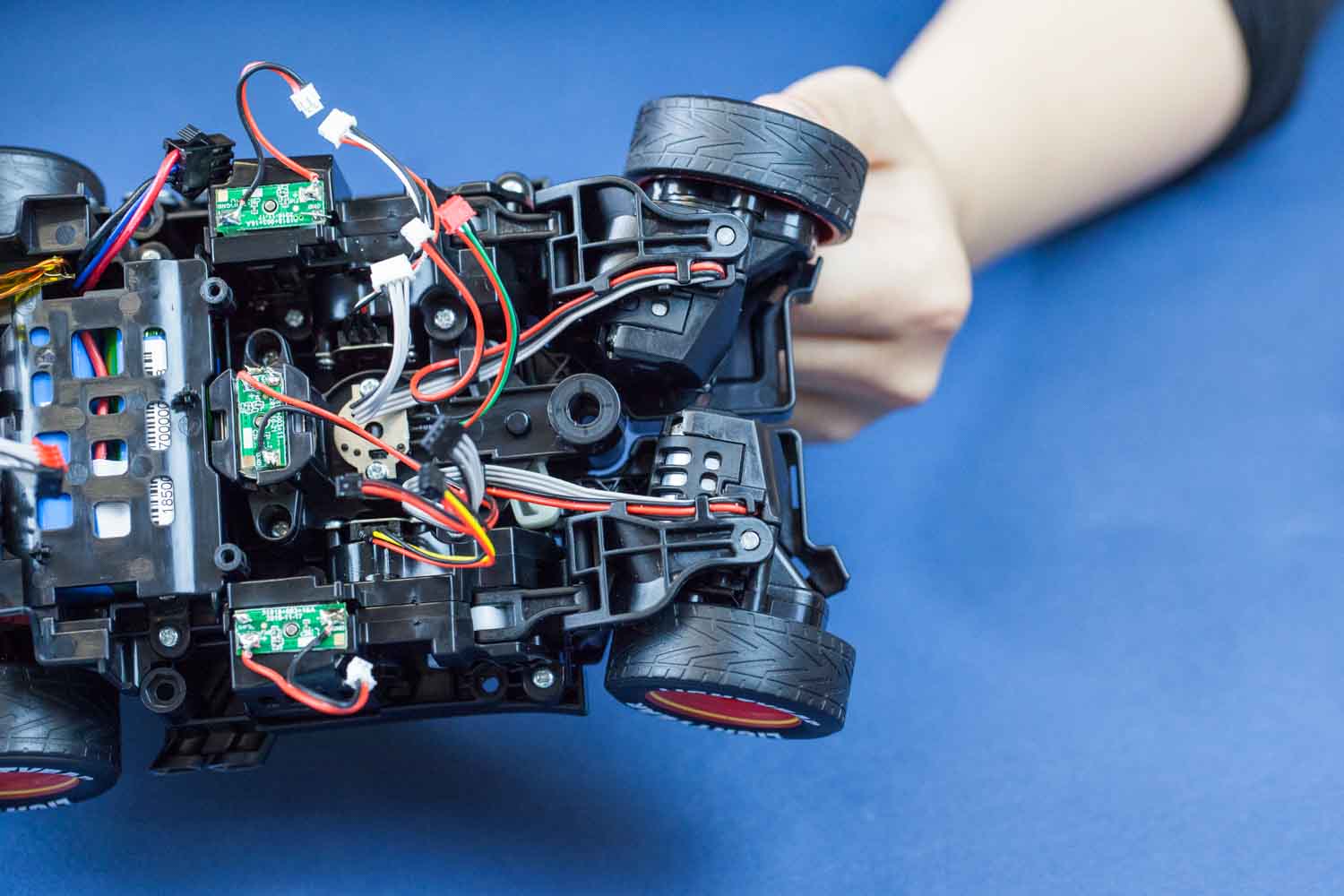
The front wheel assembly contain 5 actuators in total. The rear wheel assembly contains no actuators. It’s official: Lightning is front wheel drive, just like the best of cars: Mini Cooper!
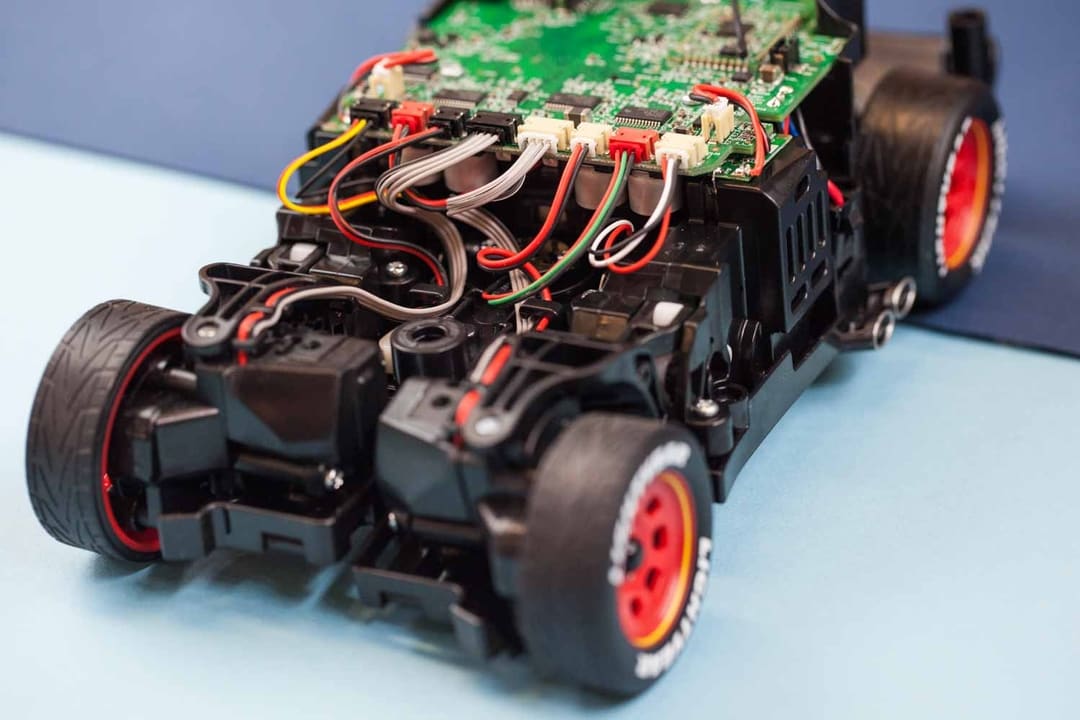
You might be surprised to hear that front and back tires are different: the front tires are co-molded with elastomer treads, but the rear tires are rigid plastic throughout. This makes sense since only the front tires need traction.
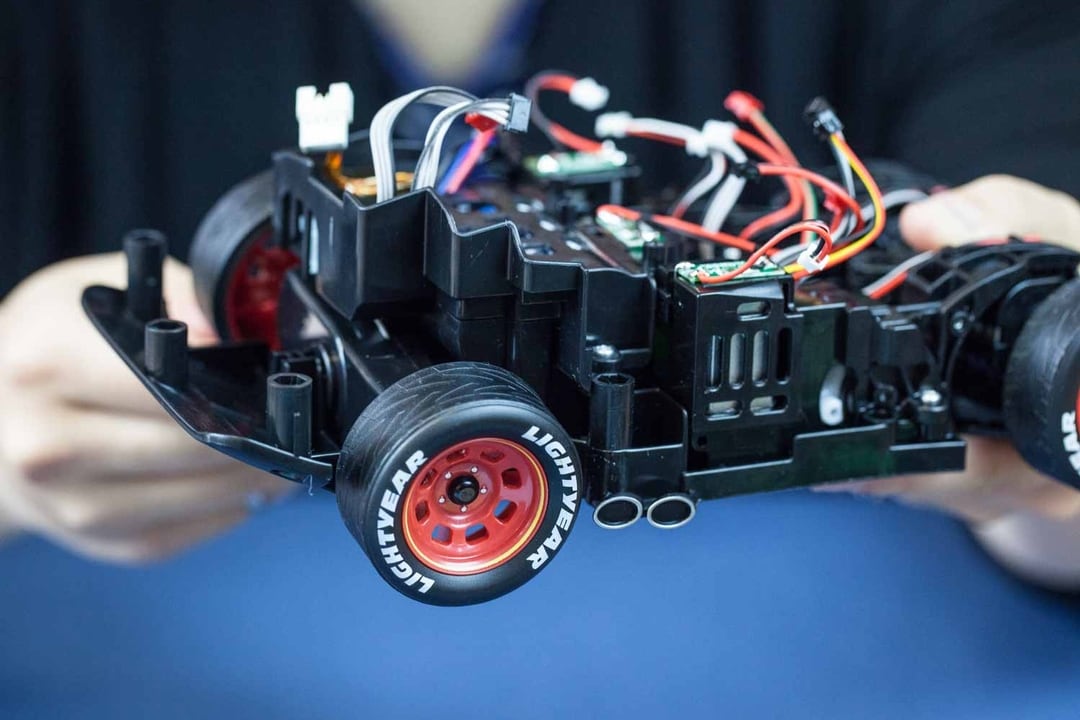
During our teardown, we found that the suspension keeps moving no matter what, even if the capacitive touch sensors have been disconnected. This is part of what makes Lightning so lifelike — it never stands still.
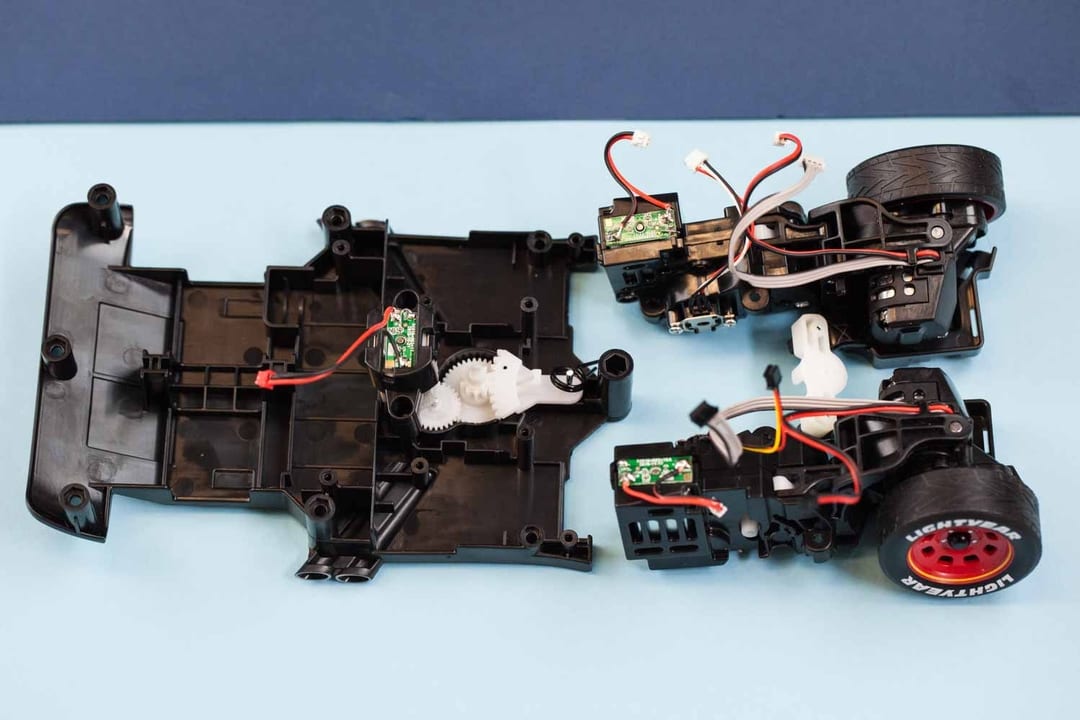
Let’s define a coordinate system here: from left door to right door is the x-axis, from the hood to the boot is the y-axis, and from the undercarriage to the roof is the z-axis.
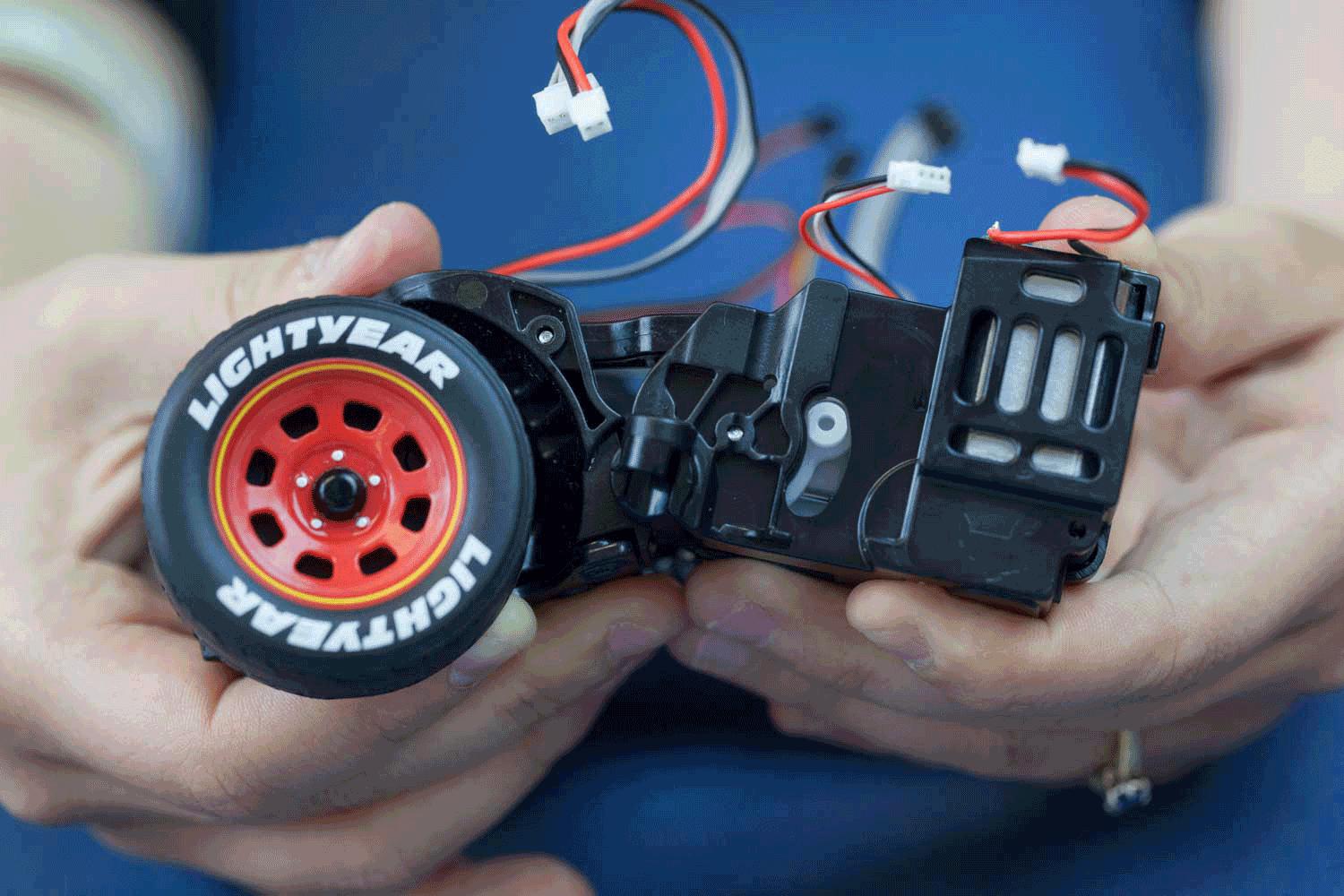
Front wheels can move up and down independently (about the car’s x-axis). This is actuated by a DC-motor driven gearbox. A rotary potentiometer measures the position.
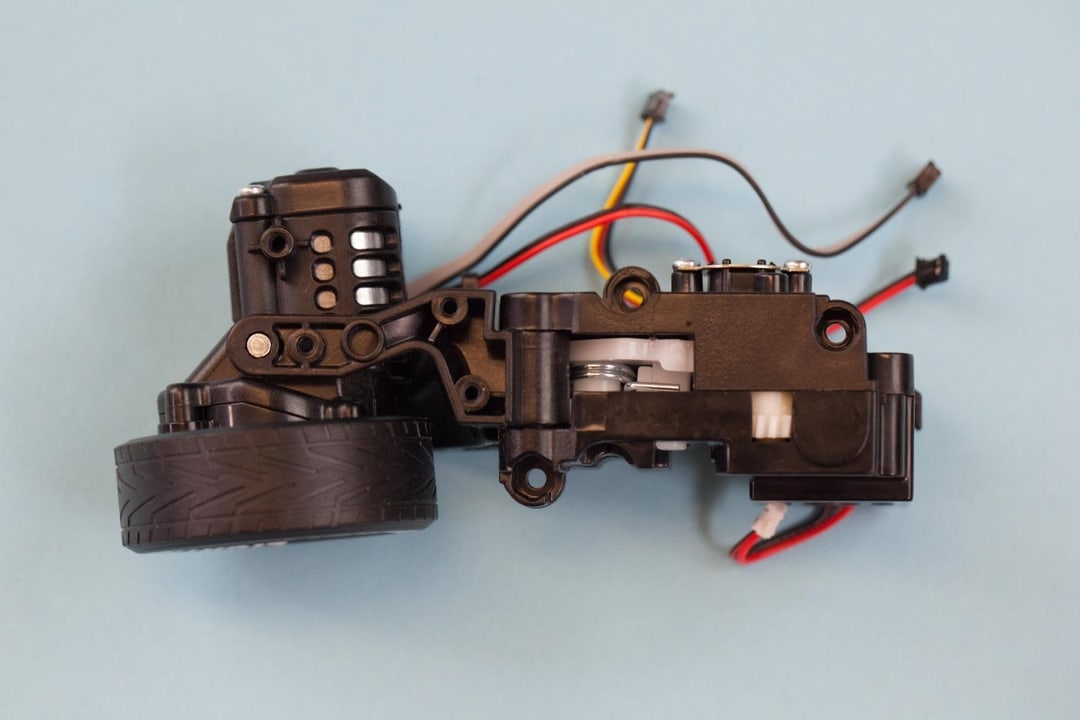
Front wheels can rotate about the car’s z-axis, but not independently. Both wheels are controlled via linkages by the same motor & gearbox set up, and you guessed it… there is a potentiometer to measure position.
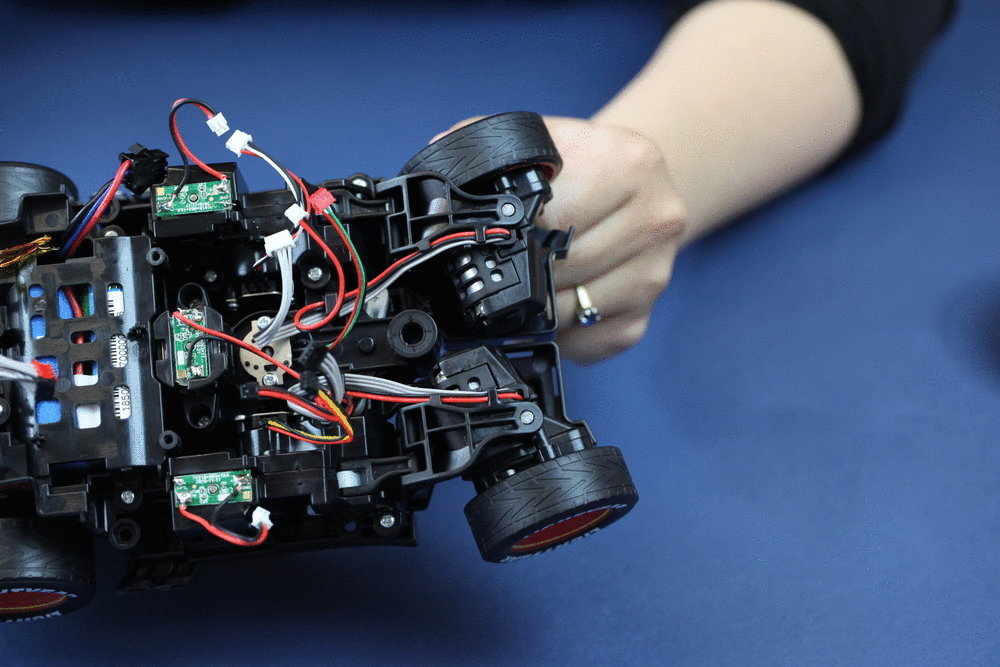
Front wheels can obviously rotate about their own axes. We found magnets and a hall effect sensor in each wheel for measuring rotational speed.
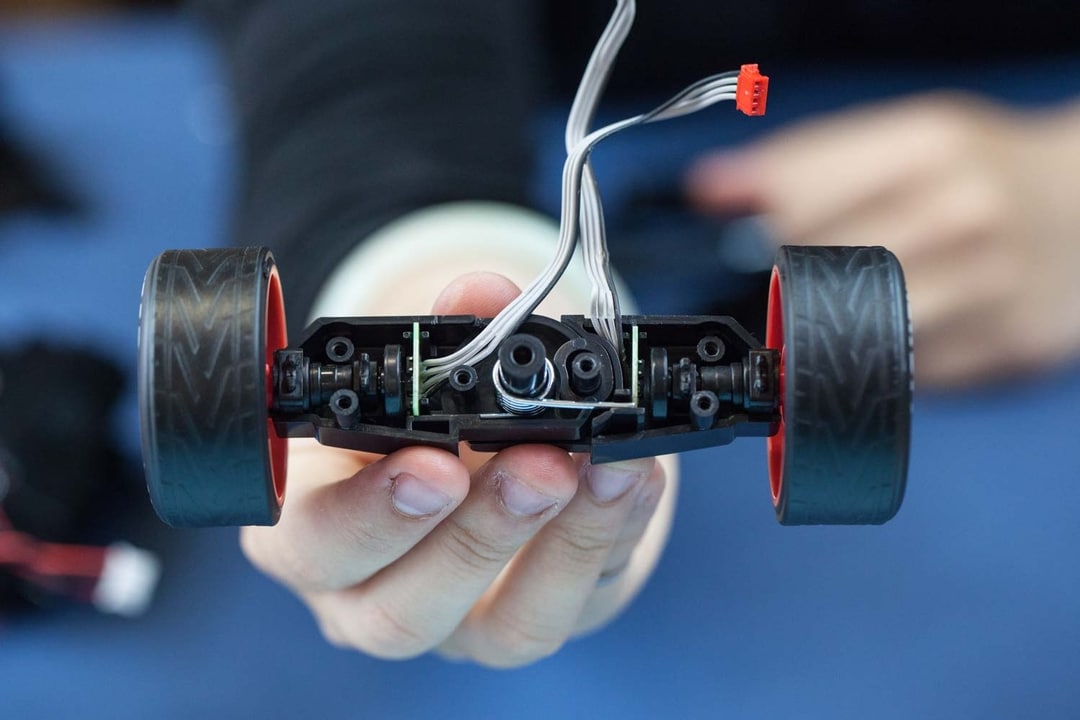
The left and right side of the rear wheel assembly are hinged together, with a torsion spring providing springy suspension.
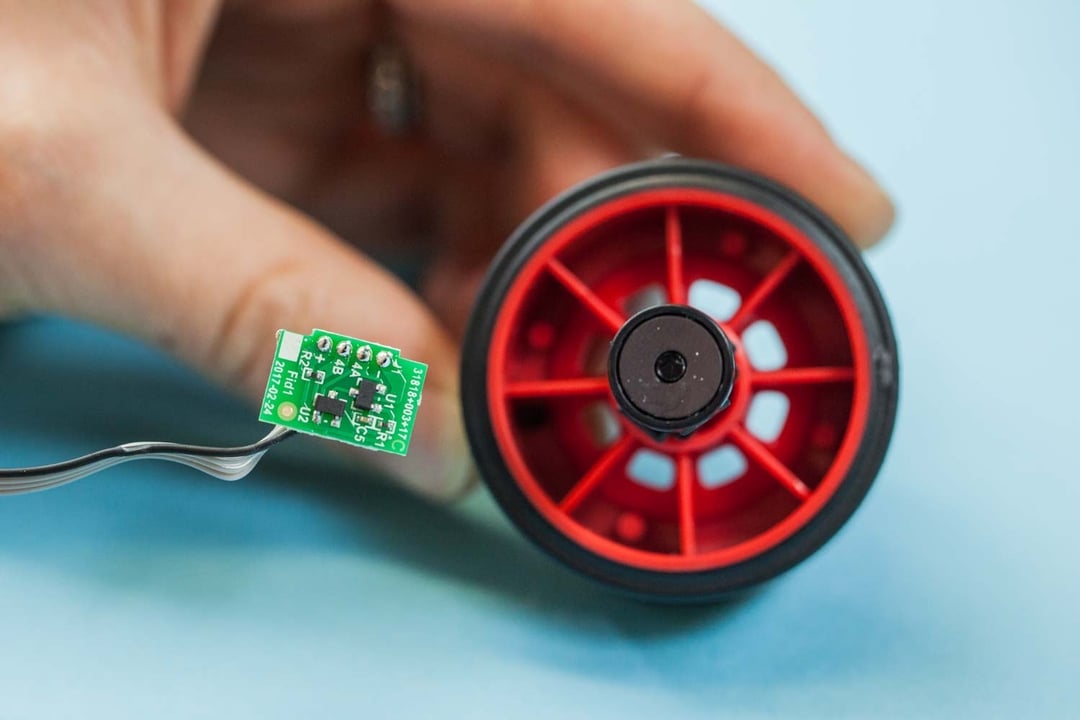
The back wheels are not driven with any motors. However, there are magnets and hall effect sensors in the assembly, perhaps to measure rotational speed.
Animatronic Face
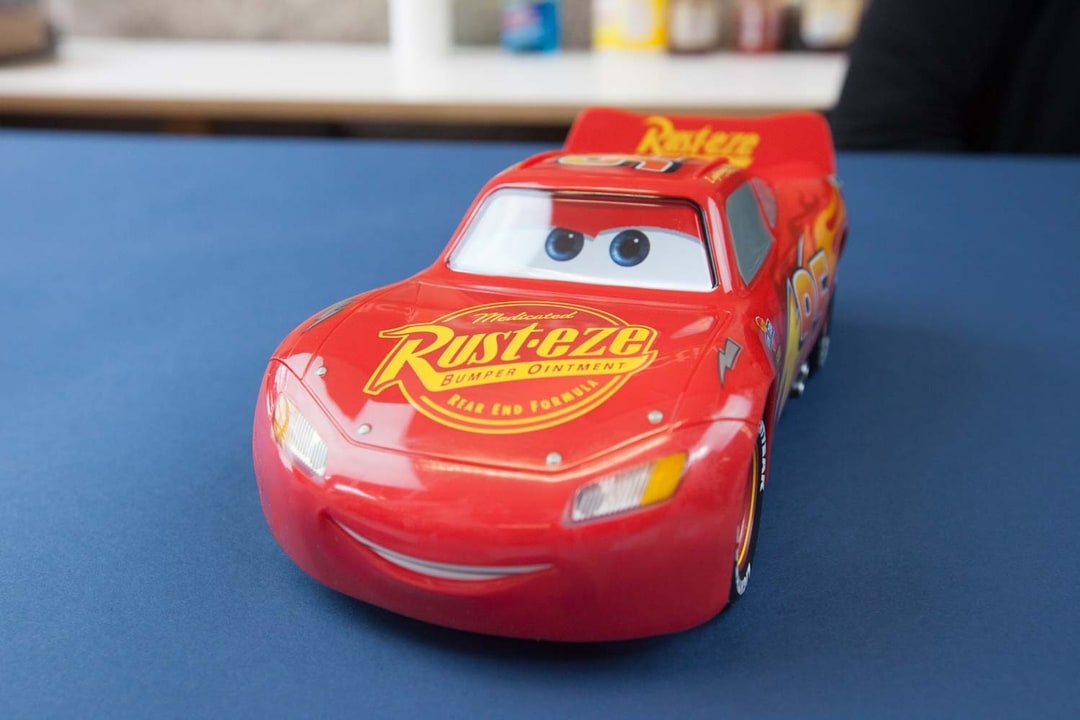
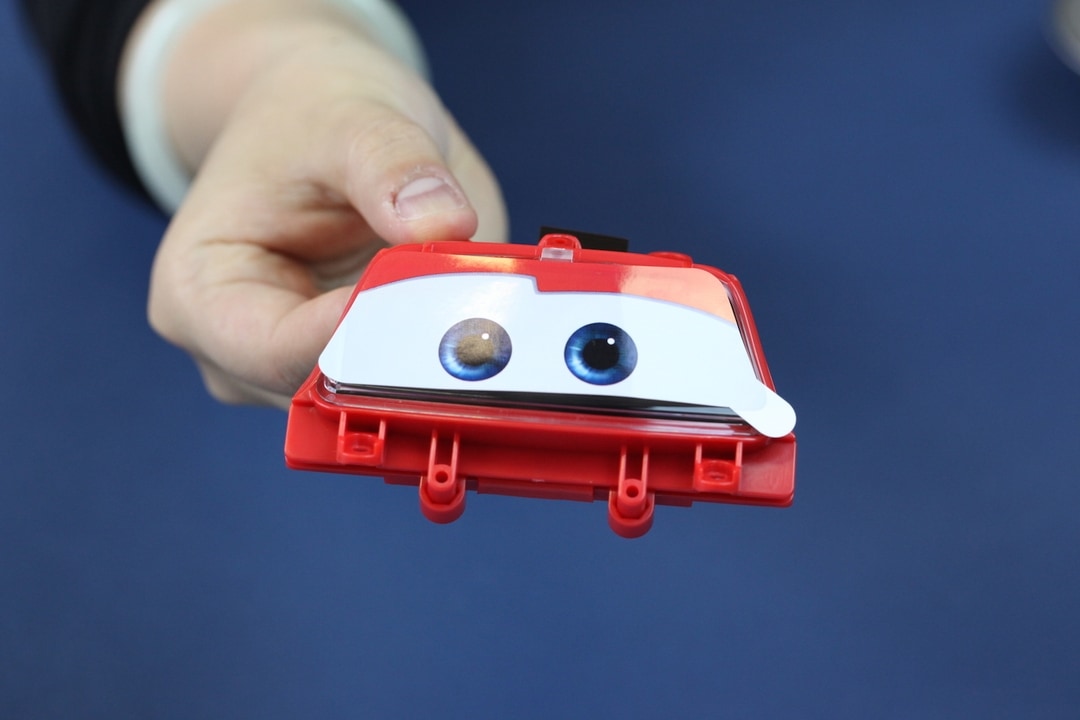
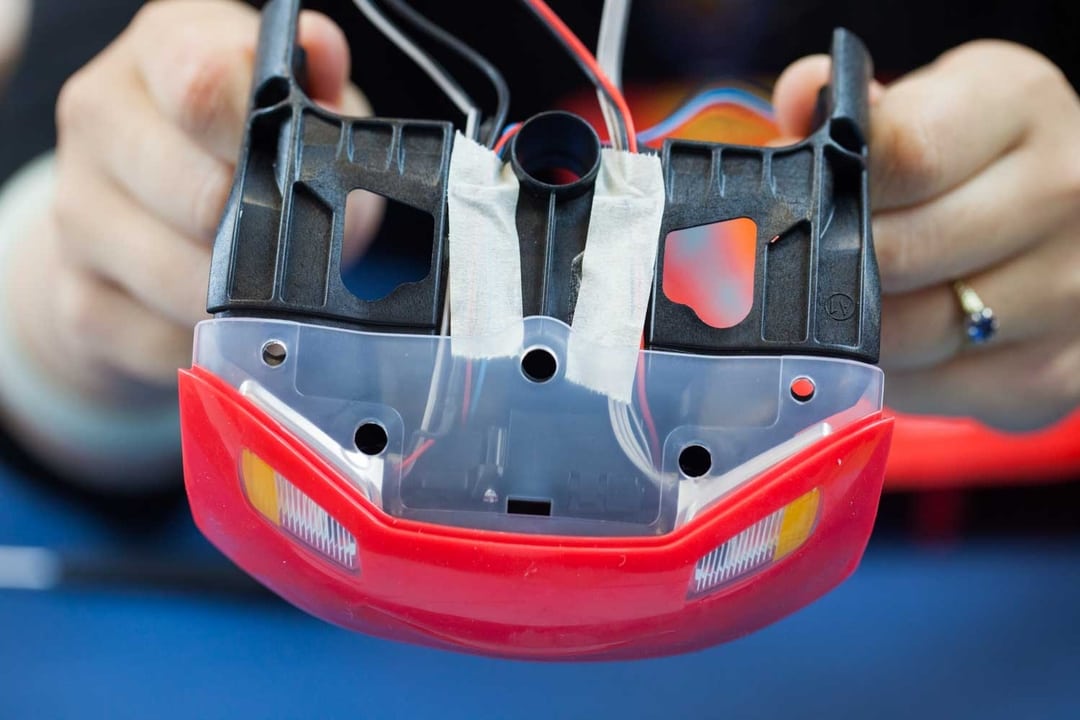
The mouth panel is co-molded, the rigid component is translucent and doubles as headlamp covers, and the elastomer component is very soft at Shore 20-30A.
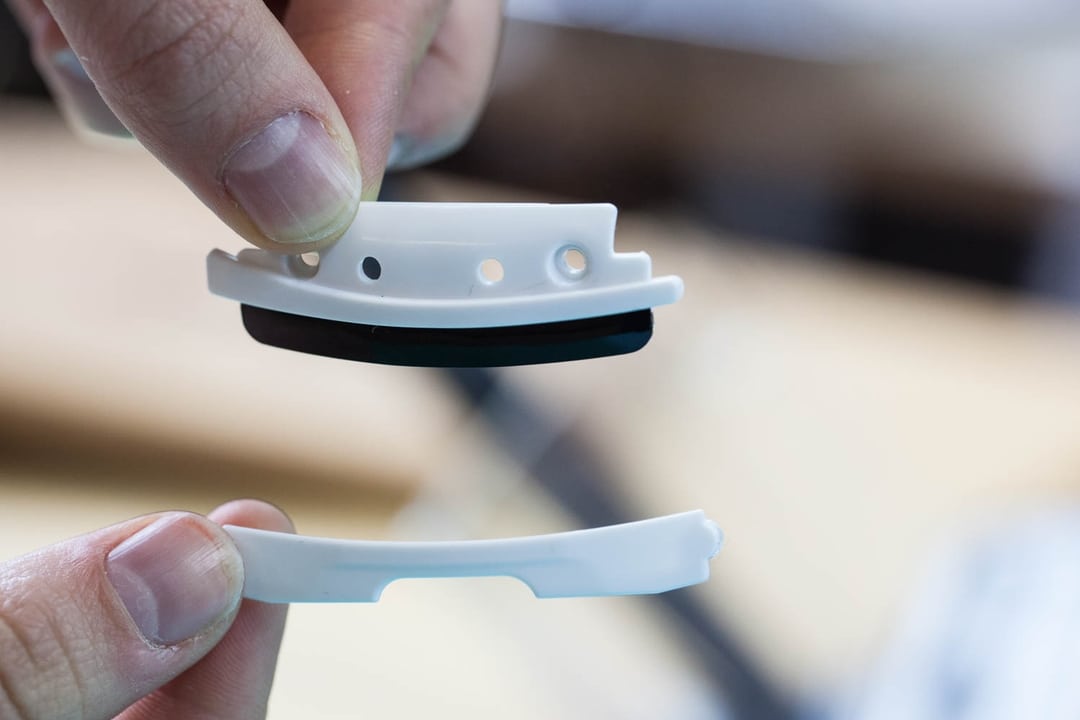
There are two plastic pieces that represent the top and bottom rows of teeth. Devil’s in the details!
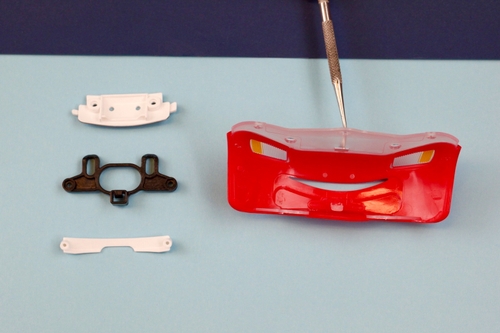
We found an IR transceiver pair hidden in the headlamps. These types of components are most often used for obstacle avoidance, but they could be used for ambient light sensing.
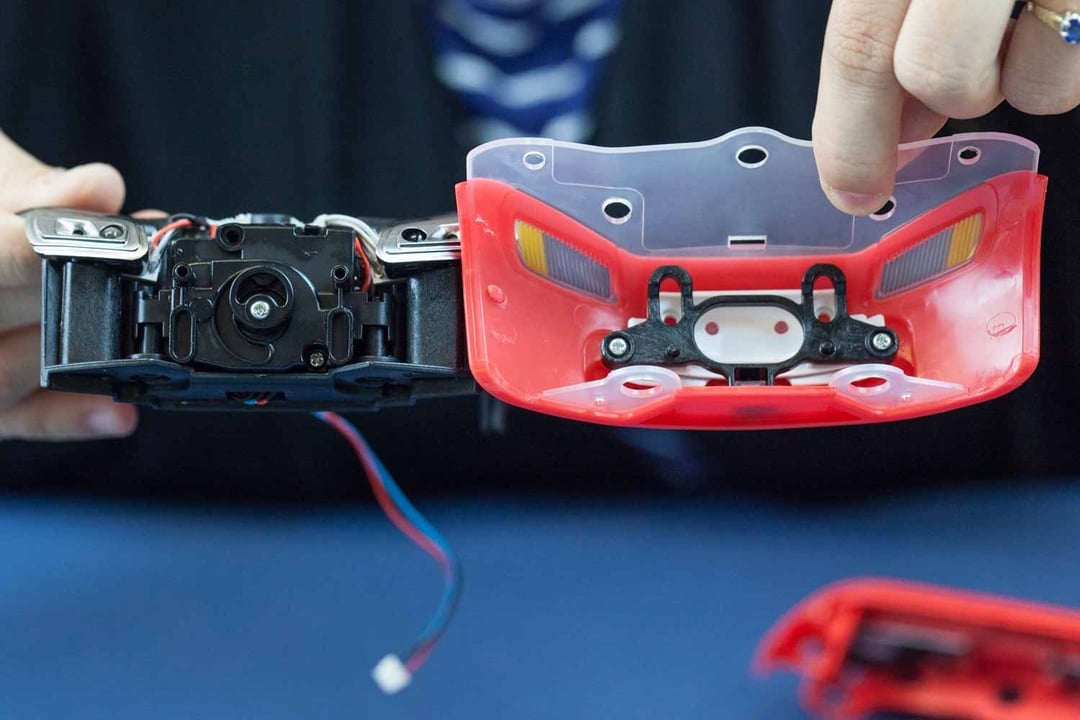
Behind the mouth panel, we find a gearbox that rotates an off-axis circular piece, essentially a cam mechanism.
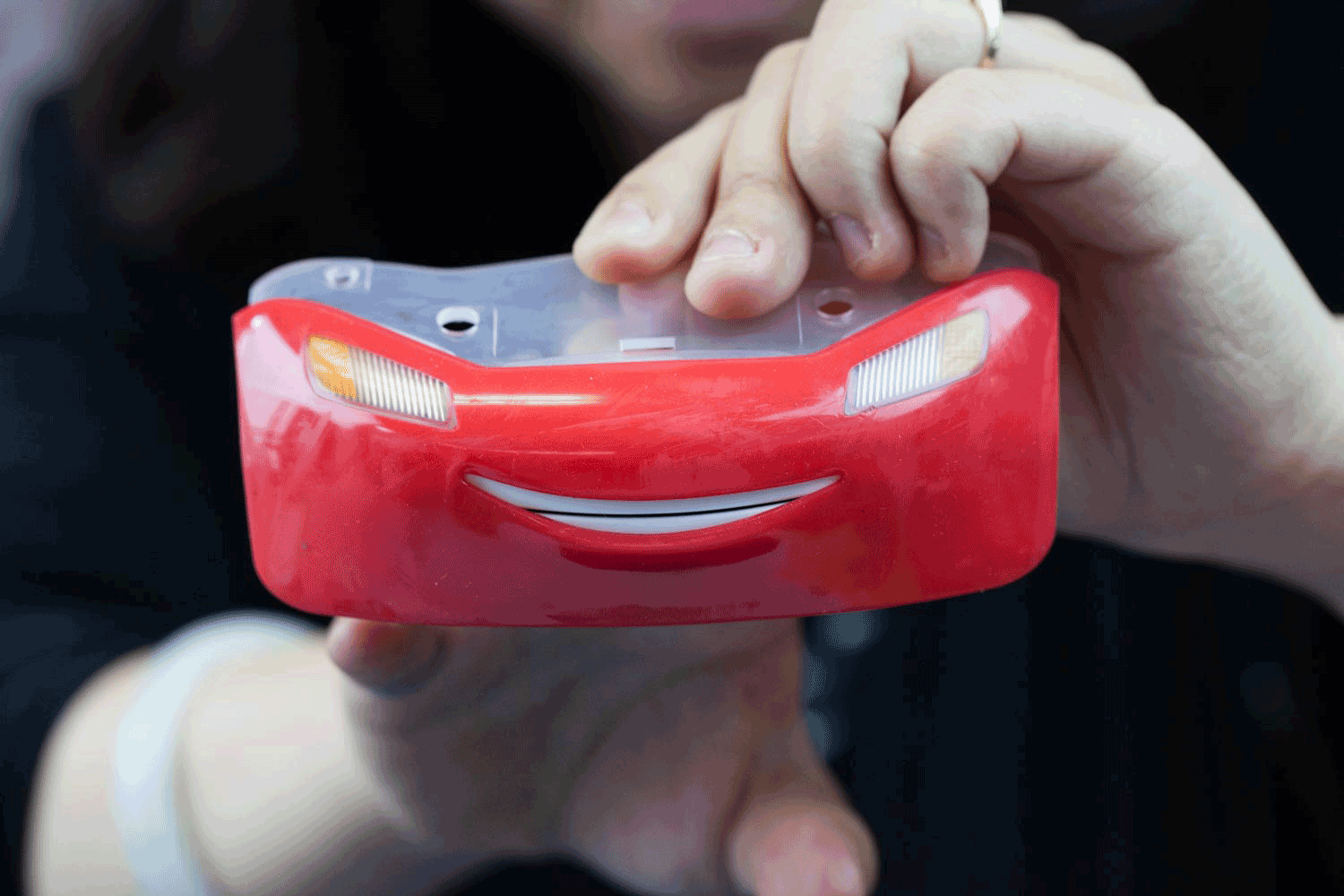
The cam inside an oval ring bracket attaches to the lower “lip”. As the cam rotates, the lower lip moves up and down
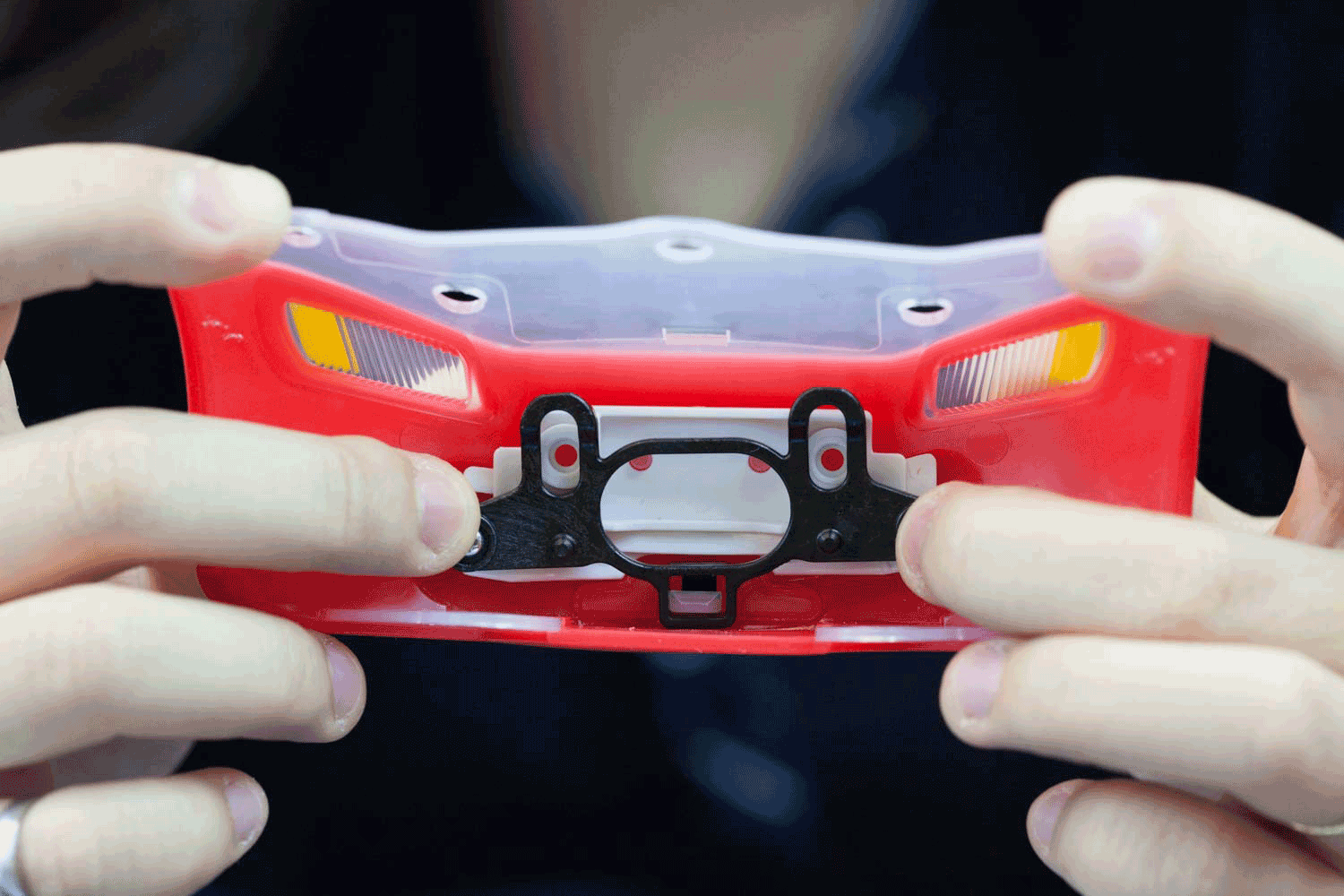
The lower teeth are also constrained to the lower lip, moving along with it.
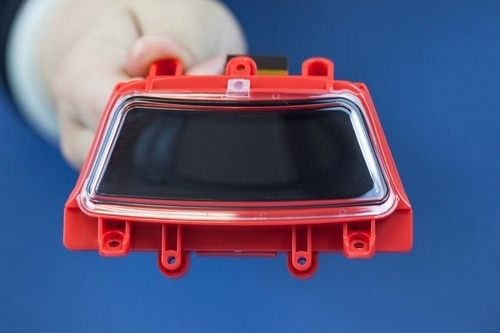
The LCD screen is very well protected. It’s fully enclosed between a clear polycarbonate front window, a bezel piece, and a back enclosure.
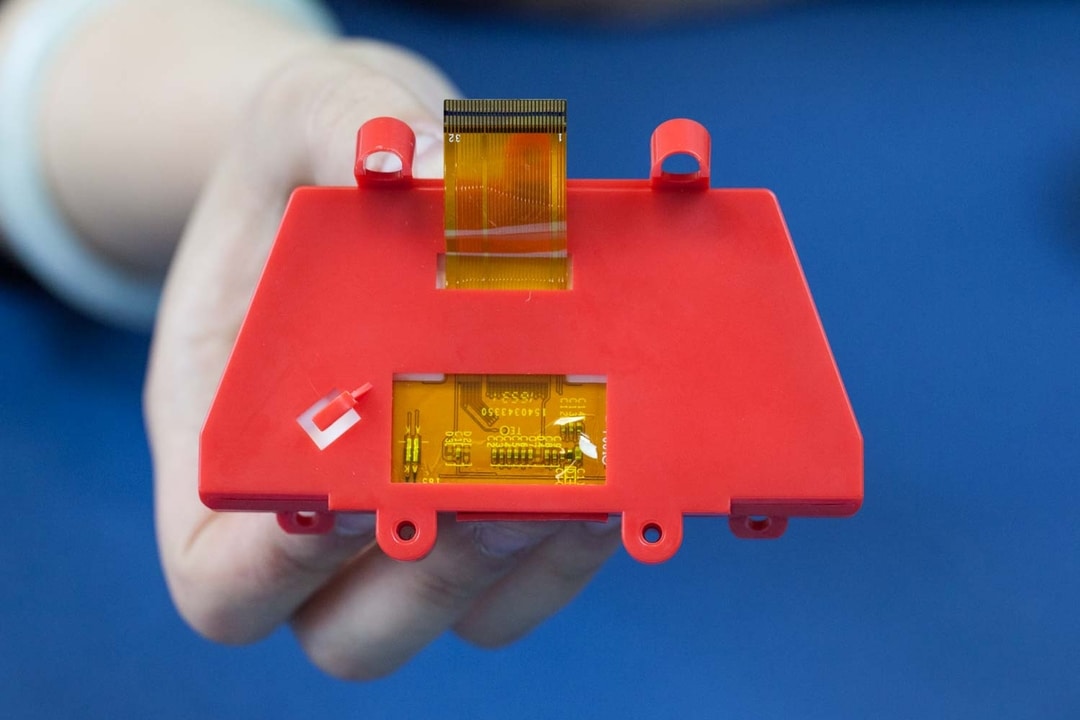
Between the LCD screen and its rigid enclosure, there is an elastomer bezel sleeve. We think this is for vibration dampening.
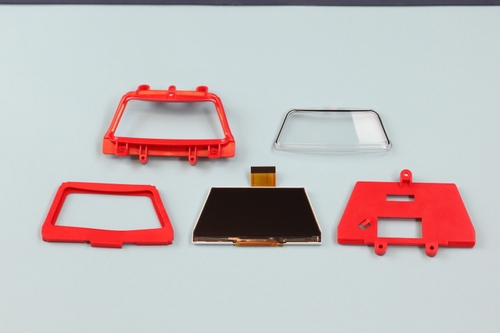
The LCD screen displays Lightning’s expressive eyes. Combined with the animatronic mouth, quite the range of facial expressions can be displayed.
Capacitive Touch Sensors
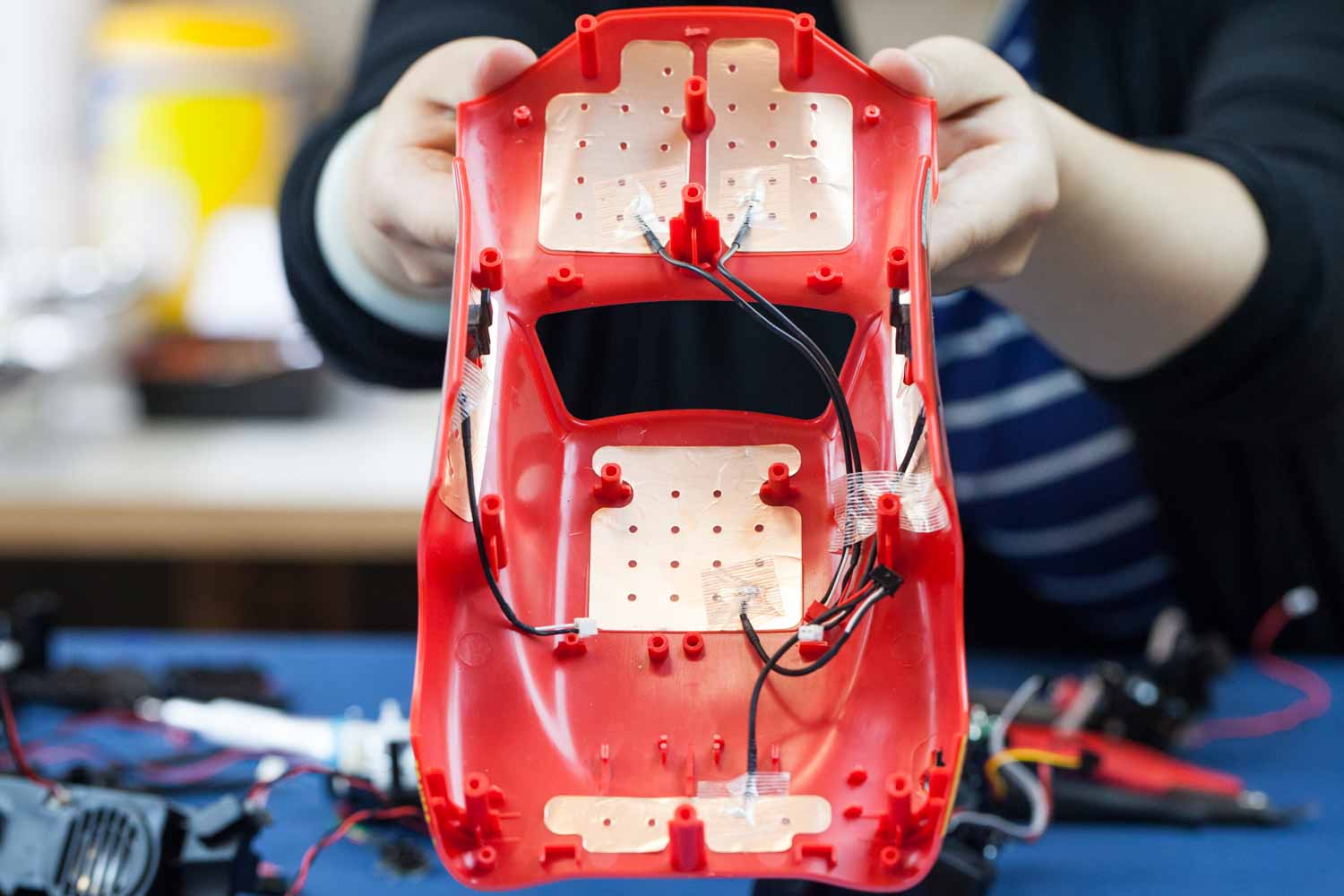
6 capacitive sensors placed throughout Lightning’s top body enclosure allow Lightning to respond to touch.
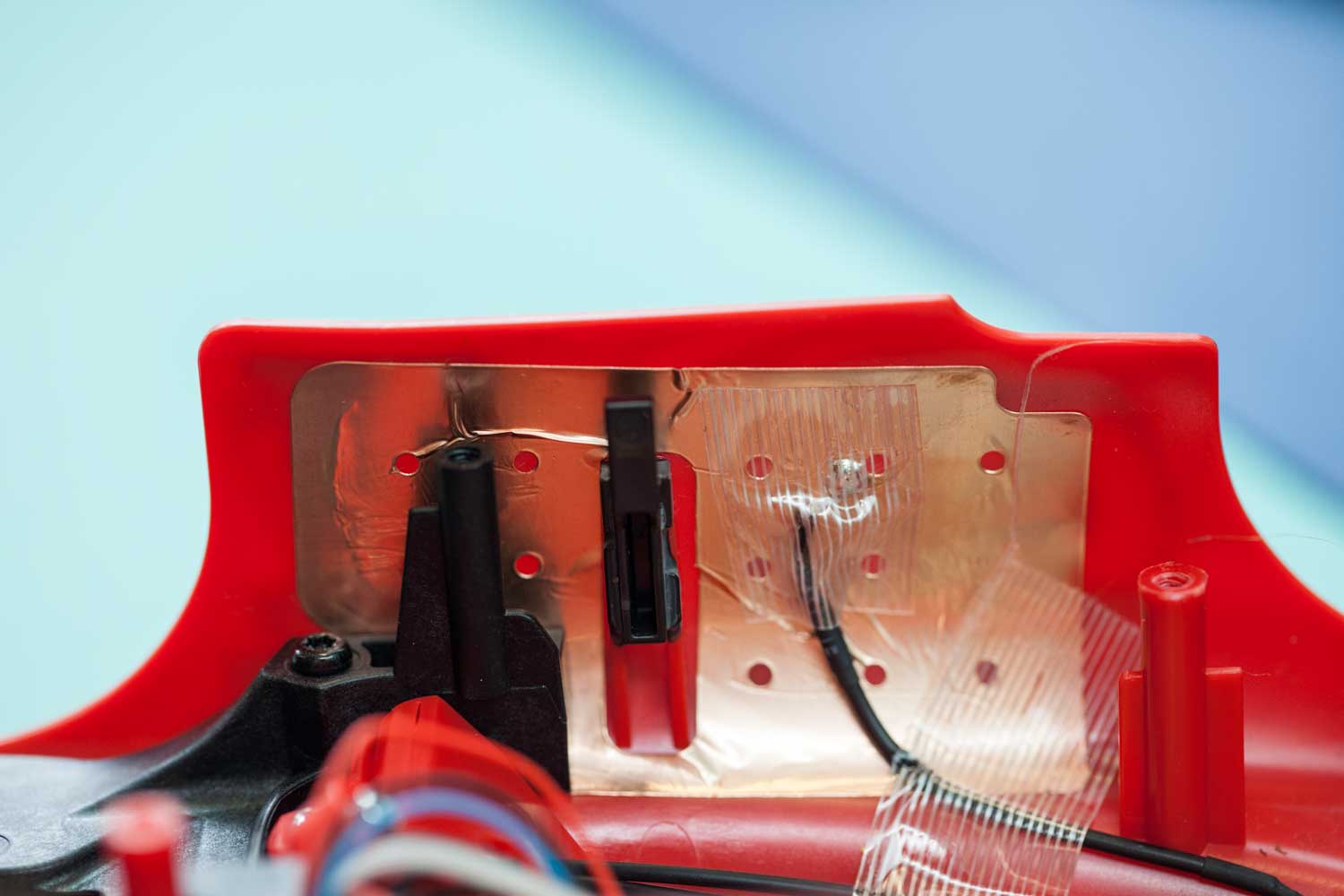
These touch sensors are common in robotics toys nowadays. We’ve previously seen them in the WowWee CHiP robot dog.
Main Takeaways
Ultimate Lightning McQueen was so cute, cheeky, and life-like that we may have had some (emotional) trouble tearing it down. It kept talking as we opened it up…saying something about a tune up.
Although it’s not a small toy, it’s the most tightly-packed toy we’ve seen in a teardown. Six gearboxes, a battery, and a large speaker in the boot take up most of the room inside the car. There’s no artificial weight—this thing is actually packed full of mechatronics goodness.
As mechanical engineers, we can appreciate how much work went into such a complex system. The attention to detail is also marvelous. For example:
- Artwork on the body is silkscreened vs stickers
- Graphics on neighboring body panels join together seamlessly
- Headlamp assemblies behind the light covers look like what you find in real cars.
It’s a high end toy with a price tag to match, but making everything just right doesn’t come cheap.
The systems integration challenge also can’t be overlooked—it must have taken a lot of blood, sweat, and tears to sync all the actuators to make the overall motion fluid and lifelike. I can just imagine the Pixar stakeholders telling the engineers to try again because it’s not quite like the movie character!
Kudos, Sphero—Lightning is a mechanical marvel, and we’re headed back to the store to buy another one to play with.


